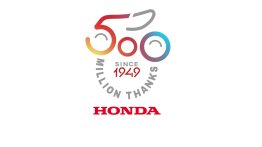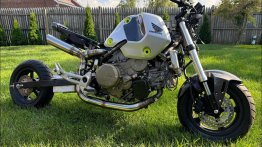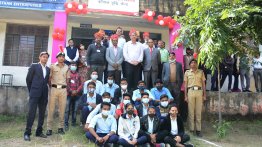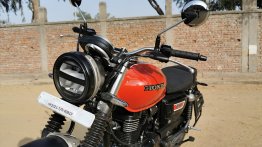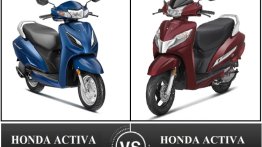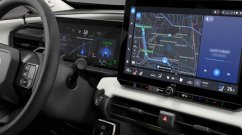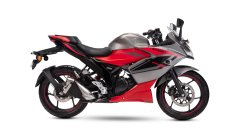It all began with the NXR750 at the 1986 Dakar Rally. With four consecutive wins (1986-89) at the world’s toughest rally, the engineers at Honda brought out the production version of the Honda XRV650 Africa Twin. The bike later became the XRV750 Africa Twin, a name which adventure motorcycling enthusiast needs no introduction to.
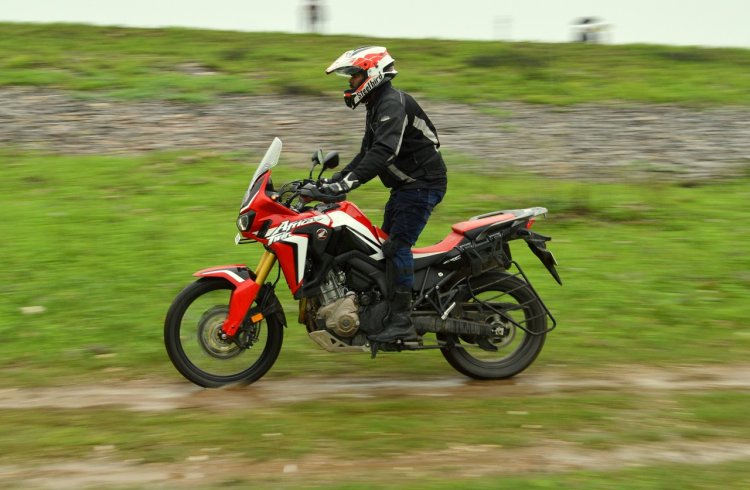
The new 2017 Honda Africa Twin though, is a very different animal. Inspired from the Honda CRF450 Rally (Honda’s present Dakar challenger), the bike is an off-roader which has adapted road-centric dynamics, and not the other way round. The compact bike glides over tarmac with ease (oh hello DCT) and is a delight while off roading as well.
Design
The 2017 Honda Africa Twin is a dapper to look at. The adventure tourer gets two circular shaped LED headlamps and a wind screen to protect the rider from windblasts. The inverted Showa forks with a golden finish add to the glamour while the chrome exhaust adds contrast. The colour option available in India is limited only in the CRF Rally colour (which in India is being called as Victory Red). I would have loved to see the tricolour paint scheme at least as an option.
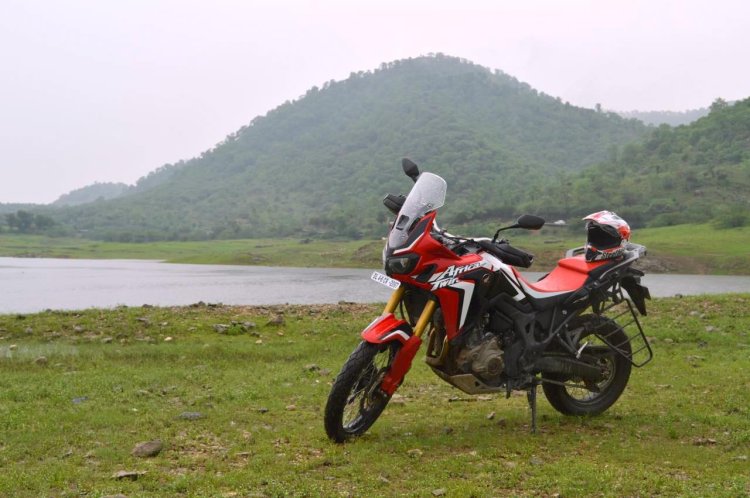
The seat is adjustable, and can be brought down to 820 mm (from the height of 840 mm) which is decently approachable for a guy of my height. An optional 860 mm seat (height) is also available. The 18.8 litre fuel tank has a sleek profile while the tail section gets a highly functional grabrail and a flat perch. The seats are comfortable to sit on both for the rider and pillion and carry the traditional white and red colours seen in CRF models by Honda.
The vertical instrumentation has been inspired from Dakar Rally machines and provide adequate visibility during the rainy weather I tested the bike in. However, that might not be the case under harsh sunlight. The numbers and modes are easy to read while riding. The switchgear on the right includes an engine kill switch which doubles up as the starter button while a thumb switch can select between Neutral, Drive and Sport modes. Also present is a hazard lamp and a switch to toggle between automatic and manual modes.
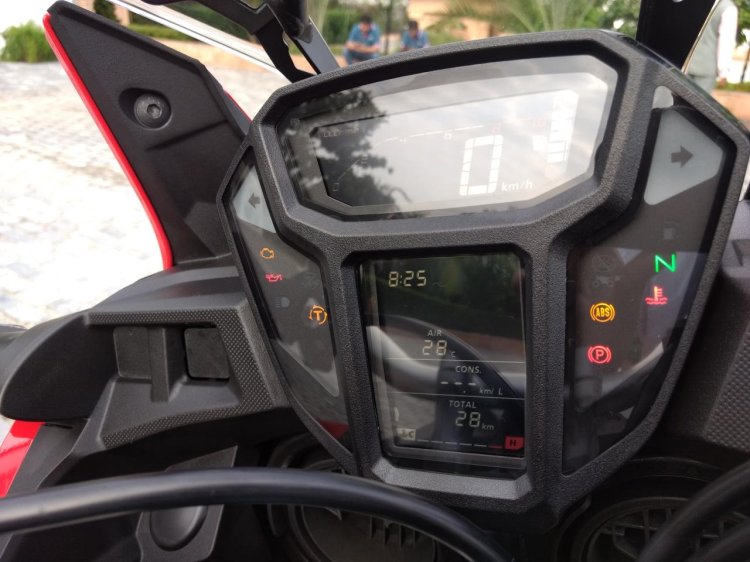
The left side of the handle bar gets the usual indicators, horn, high/low beam switch and the instrumentation console controls. Also present is a traction control level which can be accessed by the index finger and positioned right below it is the upshift switch. The downshifter has been placed below the indicator toggle.
The parking brake lever has been cleverly kept away from the reach of the rider so that they accidentally do not press it thinking it to be the clutch.
Features
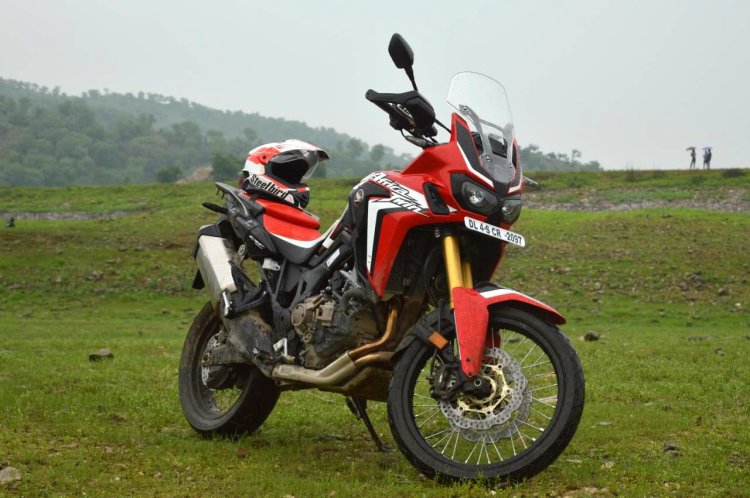
The Honda Africa Twin gets a semi double cradle frame made of aluminium. It promises and delivers on agility and balance. The engine supporting members are at six locations which keep things under control both on and off the road. The biaxial primary balancers not only reduce vibrations but also drive the water and oil pumps. The oil tank has been built in the lower section of the crankcase allowing increased ground clearance, which for the record, is at 250 mm. The water pump has been housed inside the clutch case which helps in weight reduction.
The riding modes include a Drive (D) which has been optimised for fuel efficiency with a claimed figure of 21.5 km/l and a range of over 400 km. The Sports mode (S) includes three settings, S1, S2 and S3, each with increasing levels of performance. The difference is easily recognisable and can be adjusted on the fly. The traction control (Honda Selectable Torque Control) also is switchable and gets three levels (T1, T2 and T3).
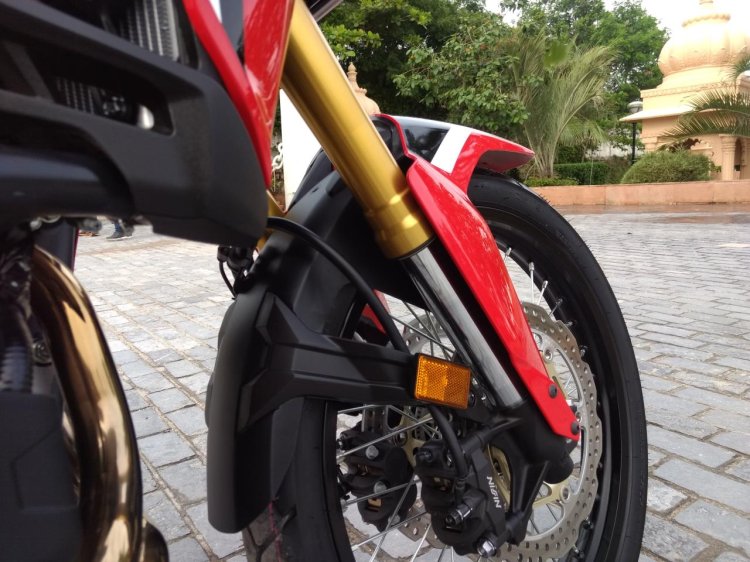
The front 45 mm cartridge type Showa fork is fully adjustable and offer 230 mm of travel while the rear monoshock offers similar levels of adjustability with 220 mm of travel. The latter can be adjusted with a hydraulic toggle, eliminating the need of tools. The handlebar clamp gets rubber mountings to reduce vibrations when landing from a jump.
The Honda Africa Twin also gets a brass dynamic damper in the handlebar to control vibrations and reduce arm fatigue during long distance touring. ABS is switchable for the rear wheel to allow it to slide freely while off roading. The safety feature can however, only be switched off at stand still. A ‘G mode’ is also on offer for gravel. It can be activated by a long pressing the G button near the dash. The G mode provides half-clutch control that responds directly to throttle operation and includes improved traction throughout all modes.
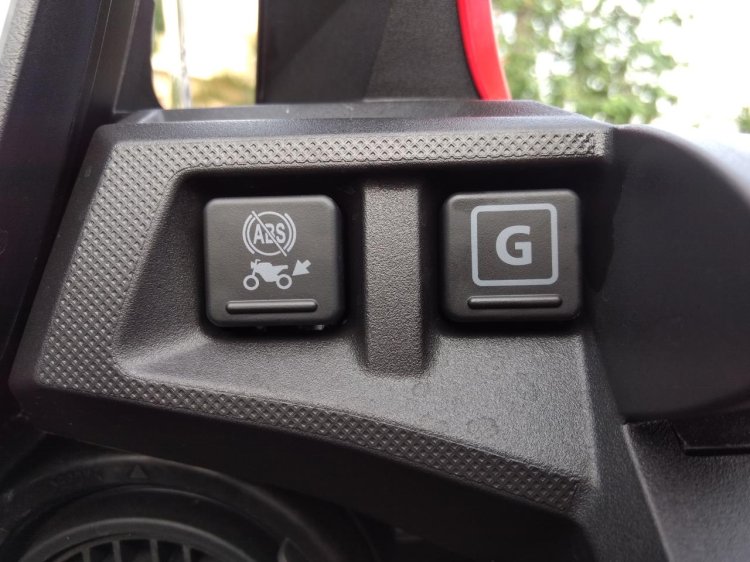
Brakes include dual 310 mm floating petal discs up front with 4 pot radial calipers sourced from Nissin. Rear gets a 256 mm single petal unit with a single-pot caliper by the same brand. The bite from the front unit is adequate even during panic braking.
Engine, Transmission, Ride and Handling
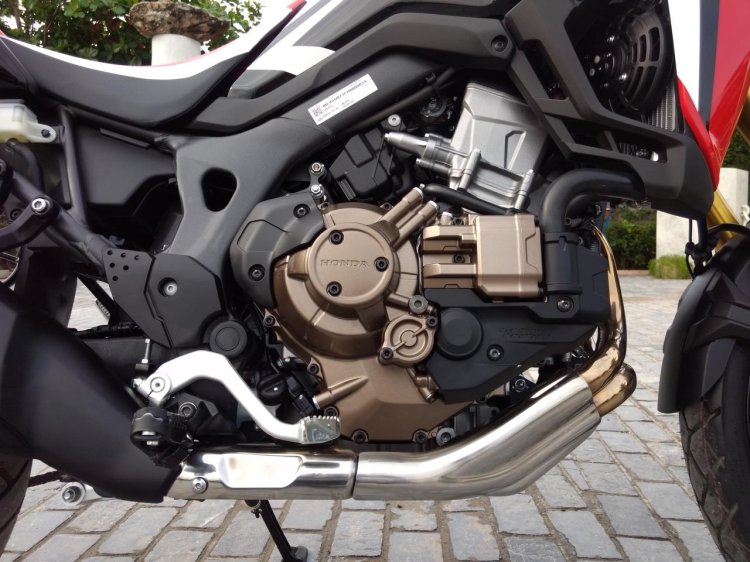
The Honda CRF1000L Africa Twin is powered by a 999.11 cc liquid cooled parallel twin cylinder mill. The engine is capable of producing 88 PS of maximum power at 7,500 rpm and 91.9 Nm of peak torque at 6,000 rpm. The engine though, is not in the same tune as the international version. The lack of a manual version may itch the purists but getting used to the changes is rather easy. The lack of a gear lever on the left foot did find me slightly unsettled initially but adapting to the change was easy. However, I did find myself searching for the gear lever with my left foot, especially during overtaking. The bike can run on standard 91 octane petrol.
Also Read: Honda India announces launch of four new two-wheelers by March 31, 2018
The new Dual Clutch Transmission (DCT) is the highlight of the machine and is significantly more sophisticated than the unit seen in the Honda VFR1200. The 6 speed unit is a gem even in traffic and filtering through bumper to bumper traffic is a breeze. The bike is extremely nimble despite its size and yes, the Activa comparisons will keep you entertained. Single digit speed crawls will bring a smile on your face while competitors' products will have you complain about a sore left arm. The manual corrections are easy to bring in with the accessible gear switches. A traditional gear lever is also on offer as an optional accessory.
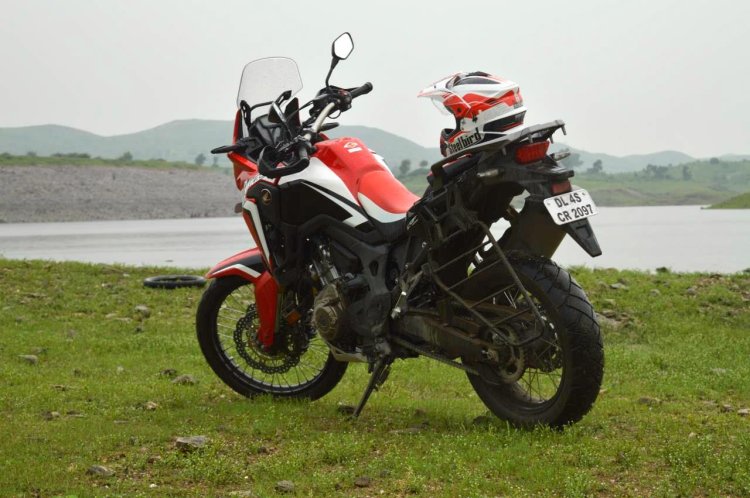
The 150 section Dunlop Trailmax sticks to the ground at slow and moderate speeds in city and highway conditions. The off road character of the motorcycle though, would have been pulled to another level had the Honda Africa Twin been shod with a better set of rubber- something along the likes of Pirelli Scorpion Trial II. The 21 inch unit in the front and an 18 inch rear is a similar setup as seen in the Dakar challenger by Honda. It can climb over the worst Mother Nature will throw at you. Want to take on Marsimik La, the real world’s highest motorable road? Piece of cake. Or sip a cup of tea next to the Pangong Tso? The Africa Twin has in it to be your trusted companion.
Heat dissipation has been very well taken care of in the 2017 Honda Africa Twin. I faced some bumper to bumper evening traffic while on my way back to the hotel. But never did I feel that the litre class powertrain wanted to roast my leg. The Honda Africa Twin has a kerb weight of 242 kg and yet is easy to not only filter through traffic but also take on the road not taken- where it especially feels at home.
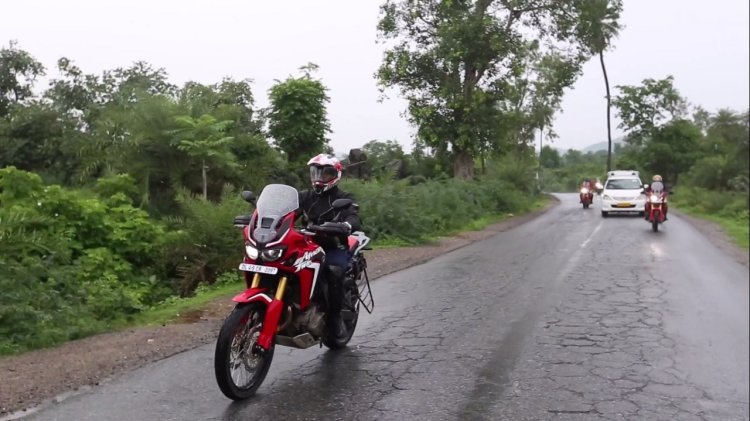
She can gobble up potholes like it is nobody’s business, and the suspension won’t make you break into a sweat. The easy adjustability of both the front and rear suspension setup will also leave you with a smile. Along with the traction control system, selectable ABS, DCT gearbox and G mode, riders get 80 patterns to choose from!
Want to keep it simple? If you are in the city and want a leisure ride home, hit the D mode. Want a bit of fun? Try the S1 and S2 modes. Enthusiasts can toggle between traction control off and T1 (when HSTC is least intrusive) and the engine in S3 mode. Oh and yes, feel free to bring the bike to a stop, switch off the ABS and have the rear wheel sliding if you are feeling even more ‘adventurous’. The 43 degree steering angle will also lead to perfect, fret-free U turns at traffic signals.
Verdict
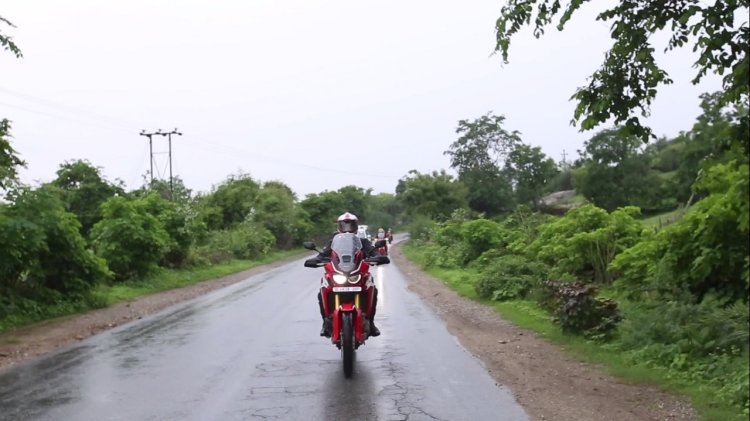
The Honda Africa Twin currently has a price tag of INR 13,06,927 (ex-showroom, Delhi), which is more expensive than the new Ducati Multistrada 950 which gets better anchors and tyres. The Italian machine produces more output but has lower suspension travel than the Honda. The machine by the Big Red brand also loses out on power output against the Triumph Tiger 800 series but has more torque. The adventure tourer from Great Britain boasts of a triple cylinder engine, cruise control and a centre stand as standard (optional for the CRF1000L).
The Honda though gets a DCT gearbox which in itself is a major selling point. The Africa Twin is also the country’s first litre-class motorcycle to be manufactured in India as a CKD. The legacy and off road character is another defining weight towards its favour. To put it in simple terms, the new kid in the block opens a whole new avenue for riders who seek adventure.

There is one small problem though. Honda Motorcycle and Scooter India Pvt Ltd promised just 50 units of the Honda Africa Twin in the first phase. All of these have been booked and accounted for, and the company is yet to reveal when the next batch is heading to India. Till then, keep your fingers crossed.




















